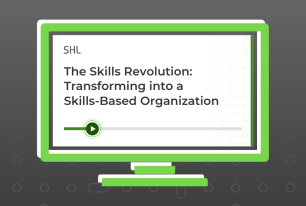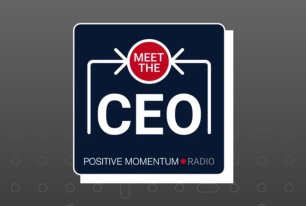How to Become a Transformational Leader During Challenging Times
Leadership during the most transformational year of our lives has been challenging, but we can use 2020 to clarify our vision for 2021.
Share
The transformations going on around the world have impacted every one of us, and leaders in particular — whether they have suddenly happened (i.e. COVID-19); have been simmering away to emerge resonantly (i.e. the Black Lives Matter movement); or have just been things that we are still getting used to (i.e. globalization, digitalization, diversity, and technology, etc.).
The question is, how will leaders transform to keep up with this new world?
In fairness, probably not many of us anticipated COVID-19, but some of the other transformational challenges mentioned earlier, have been around for some time. If reading the future defines a great CEO, then isn’t a great organization one that anticipates the challenges that need to be navigated, and aligns its organizational and talent strategy to addressing these?
Key Leadership Challenges
Although it appeared like a tsunami of chaos, confusion, and destruction, COVID-19 and its after-effects have highlighted key challenges including:
- Successfully leading teams dispersed across the globe.
- Delivering in a world of chaos and uncertainty, where ambiguity reigns.
- Providing a safe and secure environment for employees to thrive.
- Developing and executing new strategies to take the organization forward.
- Delivering in an environment where products, services and processes are changing rapidly
- Operating in an environment where resource constraints have become an ever-present scenario
What’s even more interesting, is the additional challenges CEO’s identified as a focus:
- Transforming a situation where co-operation was not what it could be, into a scenario that maximizes the value of collaboration.
- Having leaders that can engage with and maximize the value of diverse teams.
- Being able to transform a culture where conflict has been rife to one where there is an aligned “one organization” approach.
Could CEO’s have been anticipating some of those other world events that we have seen in 2020?
Although it appeared like a tsunami of chaos, confusion, and destruction, COVID-19 and its after-effects have highlighted key leadership challenges.
Leaders Who Adapt Quickly Succeed
If the world is transforming, then our leaders need to do the same. And they have had to do that very quickly. One of the themes I’ve seen in my conversations with various clients is how some leaders have really struggled through COVID-19. With a dependence on a virtual world, a lack of physical contact, a workforce that are managing multiple responsibilities as well as the day job.
Leaders have had no option but to adapt their approach, provide more autonomy to their team, re-think how they manage remotely and recognize that although the virus may lessen in due course, people’s expectations about the way they work have been ignited – for example, research by The World Economic Forum identified that when it comes to attracting talent, having a choice in work location was a key factor in 70% of individuals’ decision-making.
Diversity Is A Key Factor In Innovation Amid Challenge
Additionally, a recent report by Accenture on “equal cultures”, which is defined as those who put a focus on bold leadership — taking comprehensive action and driving an empowering environment — found that an individual’s willingness and ability to be innovative at work is 6x higher in the most equal cultures than in the least equal ones. They found also that women were 4x as likely to reach senior leadership positions in more equal organizations. And more to the point, if all countries raised an innovation mindset by 10%, then global GDP could increase by up to $8 trillion by 2028.
The report highlights that although 68% of leaders felt their organizations had a culture of equality and value inclusivity, only 36% of employees felt the same. The percentage of employees that perceive that their organization has made efforts to build more inclusive cultures has remained the same since 2018– at just over 50%.
The percentage of employees that perceive that their organization has made efforts to build more inclusive cultures has remained the same since 2018.
3 Ways To Be A Transformational Leader
So, what are things we can do:
- Set targets for diversity – embed them into strategy and create a real sense of belonging for all.
- Fit to the context – align individuals to the contextual challenges they are most likely to navigate successfully. You might find some hidden gems!
- Share the experience – invite leaders to share the successes and challenges they’ve had this year, we can learn from each other and reduce the fear.
As leaders, we have seen some tremendous personal growth as we navigate through this last year. Many of us are faced with the reality that we still have a lot to learn. Our success is dependent on our willingness to listen, grow, and change – quickly! Let us lean on one another for support as we continue on this path.
Contact us to learn more about how SHL can help your leaders succeed amid the challenges of our time.









